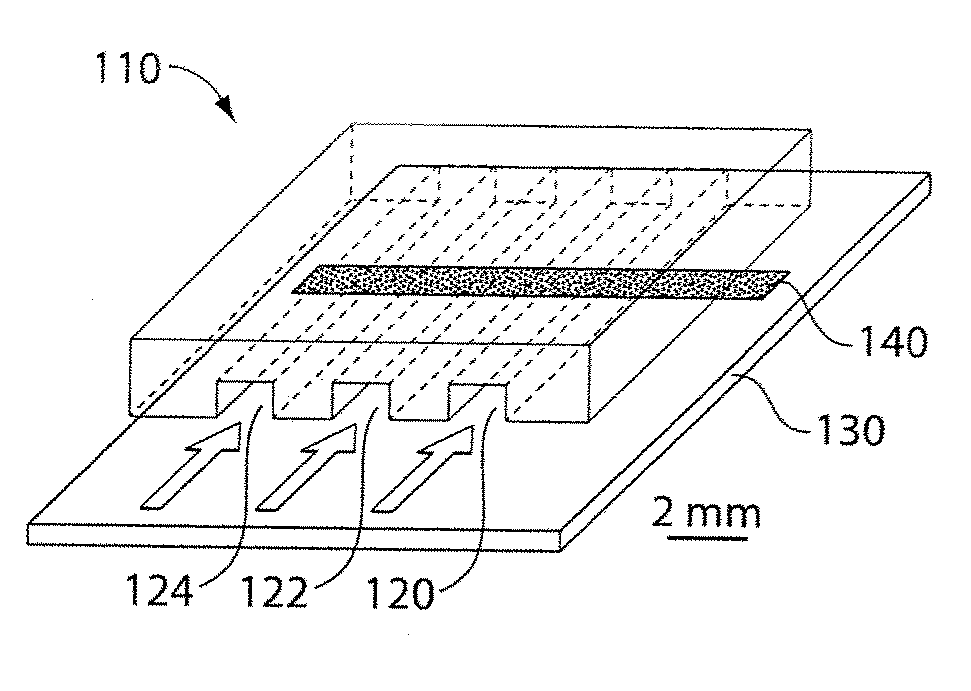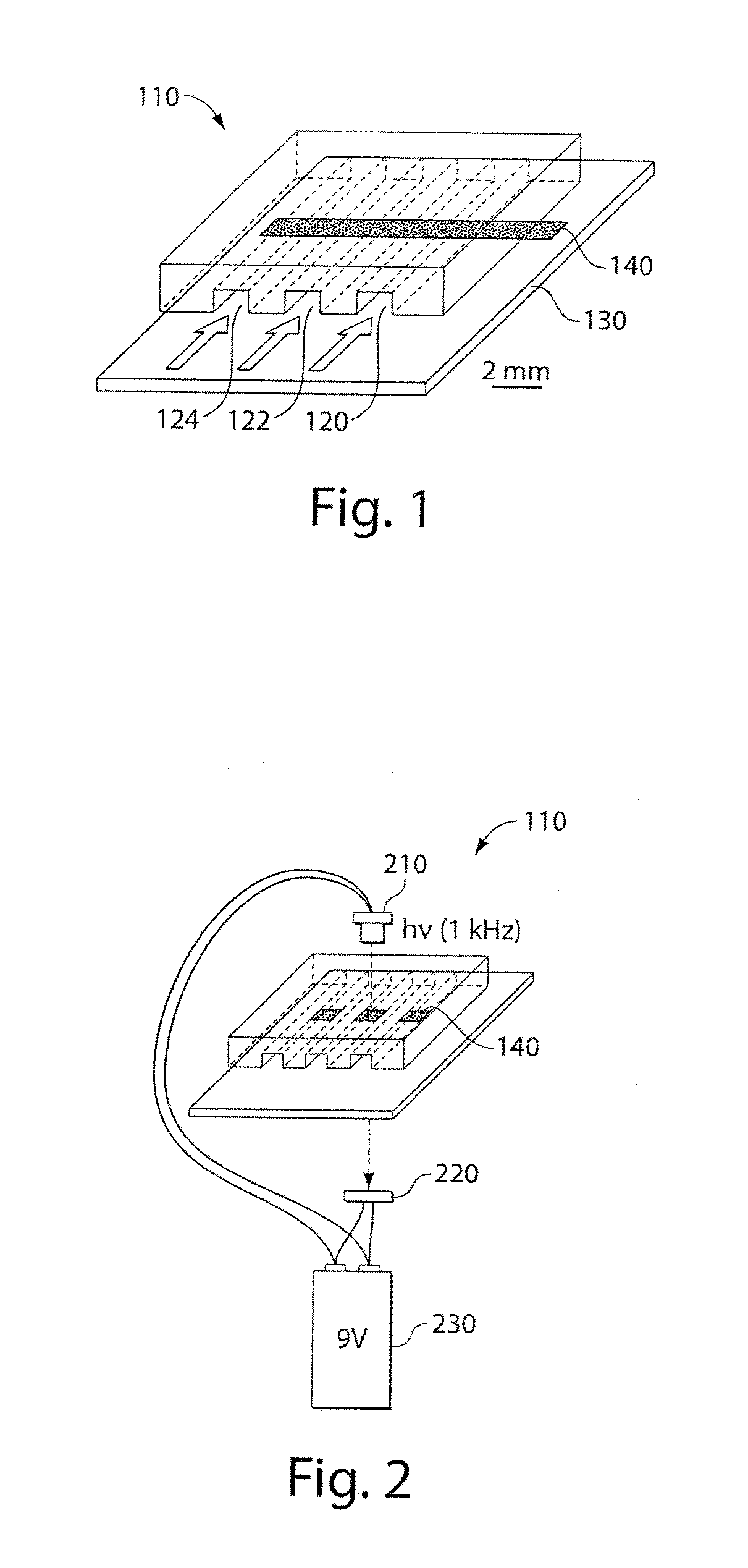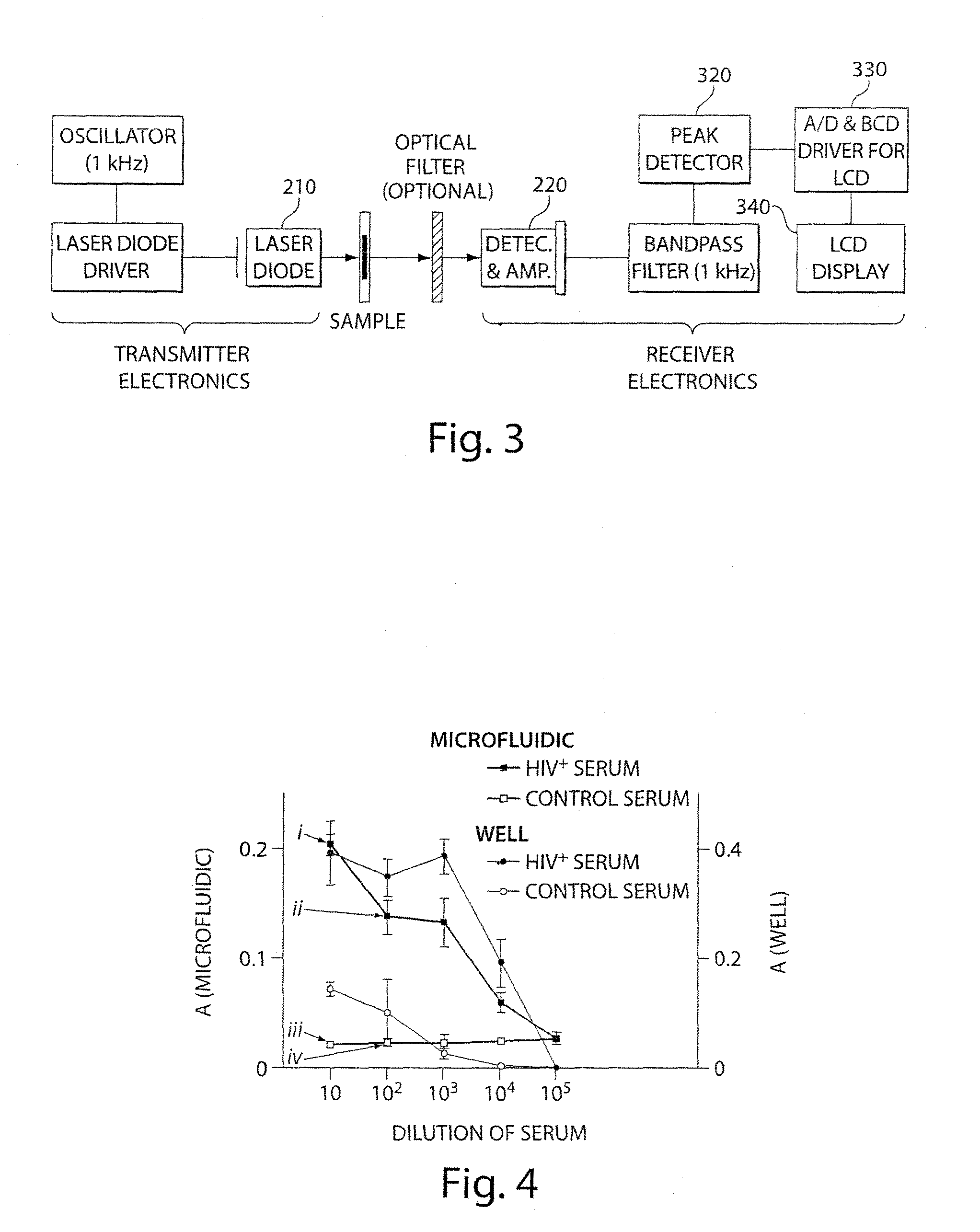Fluid delivery system and method
a technology of fluid delivery system and liquid transfer device, which is applied in the field of fluid delivery system and method, can solve the problems of short shelf life, reduced usefulness of the system in the field, and increased cost and sophistication of fluid delivery to the platform
- Summary
- Abstract
- Description
- Claims
- Application Information
AI Technical Summary
Benefits of technology
Problems solved by technology
Method used
Image
Examples
examples
[0132]An experiment was designed and run to evaluate the use of a heterogeneous immunoassay in combination with a cartridge containing a series of fluid plugs. All required reagents, except for the sample, were contained in the cartridge.
[0133]Photomasks for photolithography were obtained from PageWorks (Cambridge, Mass.). Negative photoresist SU8 was obtained from Microchem (Newton, Mass.). Poly(dimethylsiloxane) Sylgard184 (PDMS) was obtained from Dow Corning (Midland, Mich.). Polystyrene substrates were purchased from NUNC (Rochester, N.Y.). Rabbit, anti-rabbit and mouse immunoglobulin G (IgG) were purchased from Sigma (St-Louis, Mo.), and Alexa-488 donkey anti-sheep IgG was obtained from Molecular Probes (Eugene, Oreg.). A hand-operated vacuum pump and polyethylene tubing (Intramedic PE-60, 0.76 mm internal diameter and 1.22 mm external diameter) were purchased from VWR Scientific Products (Pittsburgh, Pa.). All other chemicals were of analytical grade and are available from che...
example 2
[0159]A schematic representation of one embodiment and an optical detection device is provided in FIG. 9. (A) Red light from the laser diode passes through the silver-coated microwell containing the sample to the optical IC. A pinhole was used to block stray light that did not pass through the sample. The laser diode and the optical IC were driven by the same circuit, which also had an integrated liquid crystal display that showed the measured transmittance value.
example 3
[0160]FIG. 10 provides a comparison of readings of an immunoassay using an optical IC and a UV-visible plate reader. An immunoassay using silver reduction was performed on a 96-well plate that detected rabbit IgG. Optical micrographs of the silver films on microwells are shown for each sample. The apparent absorbance of each microwell was measured by an optical IC, and compared to its reading by a UV-visible plate reader; both measurements were made at 654 nm. The best-fit line by linear regression has a correlation coefficient of 0.989, slope of 1.12, and y-intercept of 0.16.
PUM
| Property | Measurement | Unit |
|---|---|---|
| inner diameter | aaaaa | aaaaa |
| inner diameter | aaaaa | aaaaa |
| length | aaaaa | aaaaa |
Abstract
Description
Claims
Application Information
 Login to View More
Login to View More - R&D
- Intellectual Property
- Life Sciences
- Materials
- Tech Scout
- Unparalleled Data Quality
- Higher Quality Content
- 60% Fewer Hallucinations
Browse by: Latest US Patents, China's latest patents, Technical Efficacy Thesaurus, Application Domain, Technology Topic, Popular Technical Reports.
© 2025 PatSnap. All rights reserved.Legal|Privacy policy|Modern Slavery Act Transparency Statement|Sitemap|About US| Contact US: help@patsnap.com



